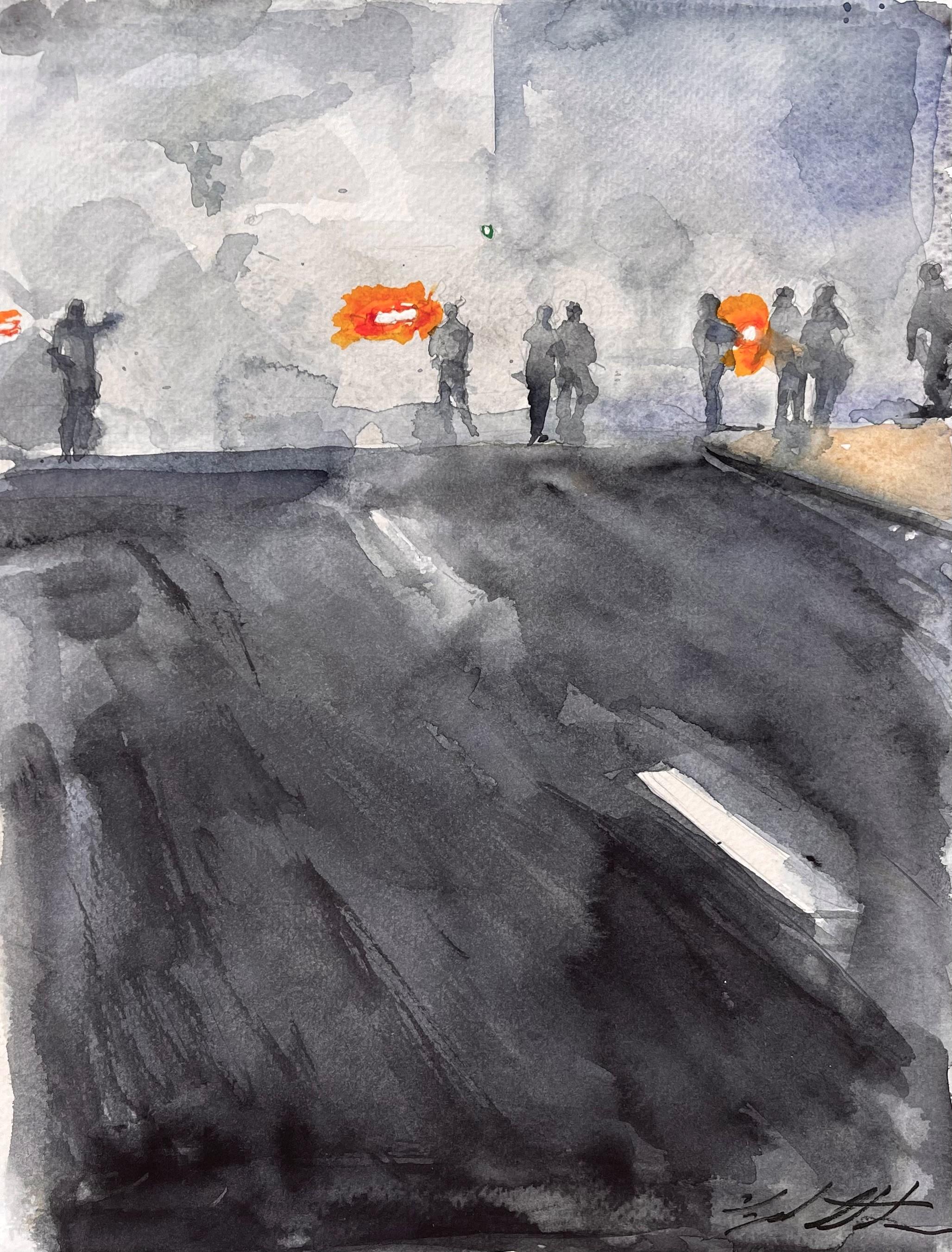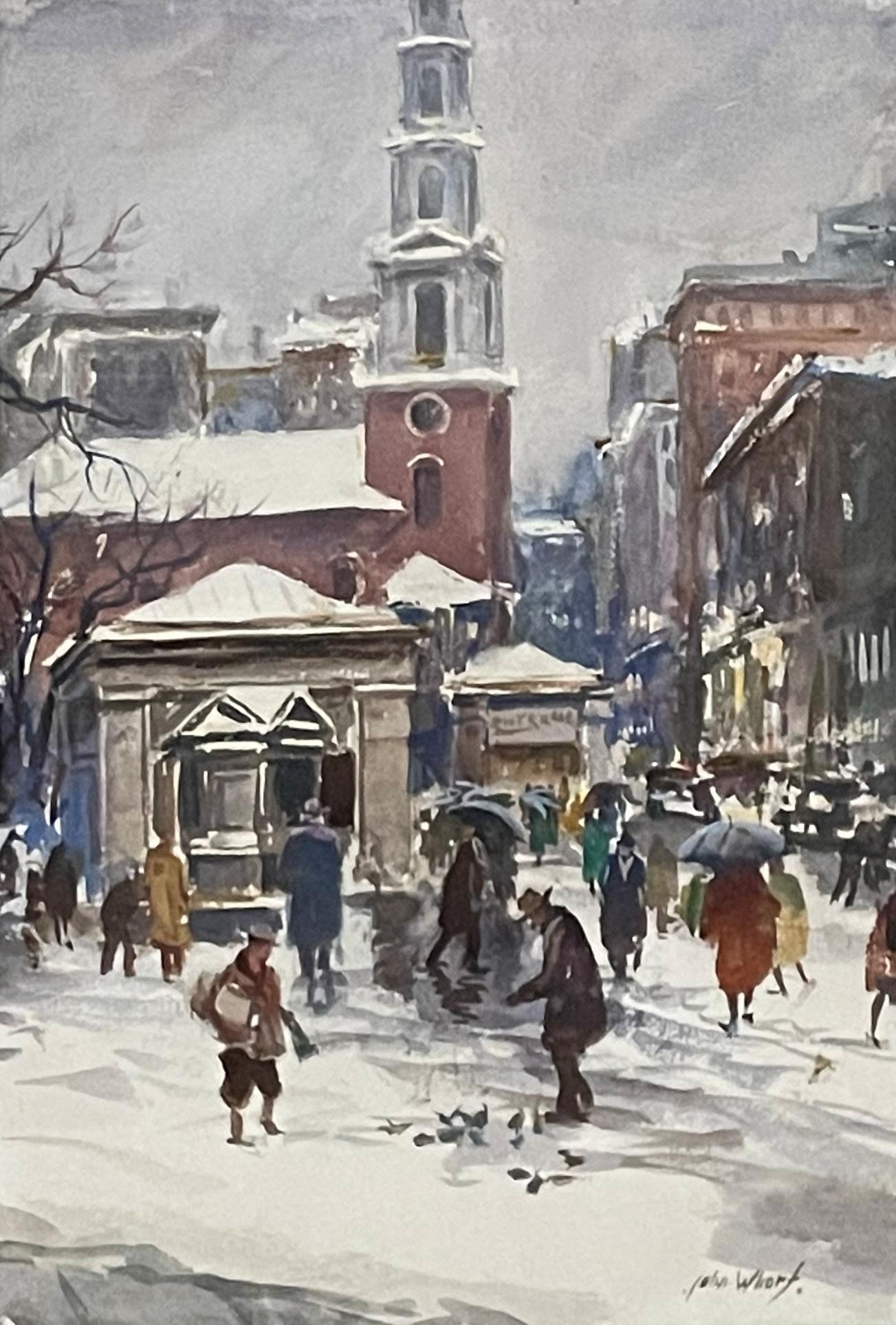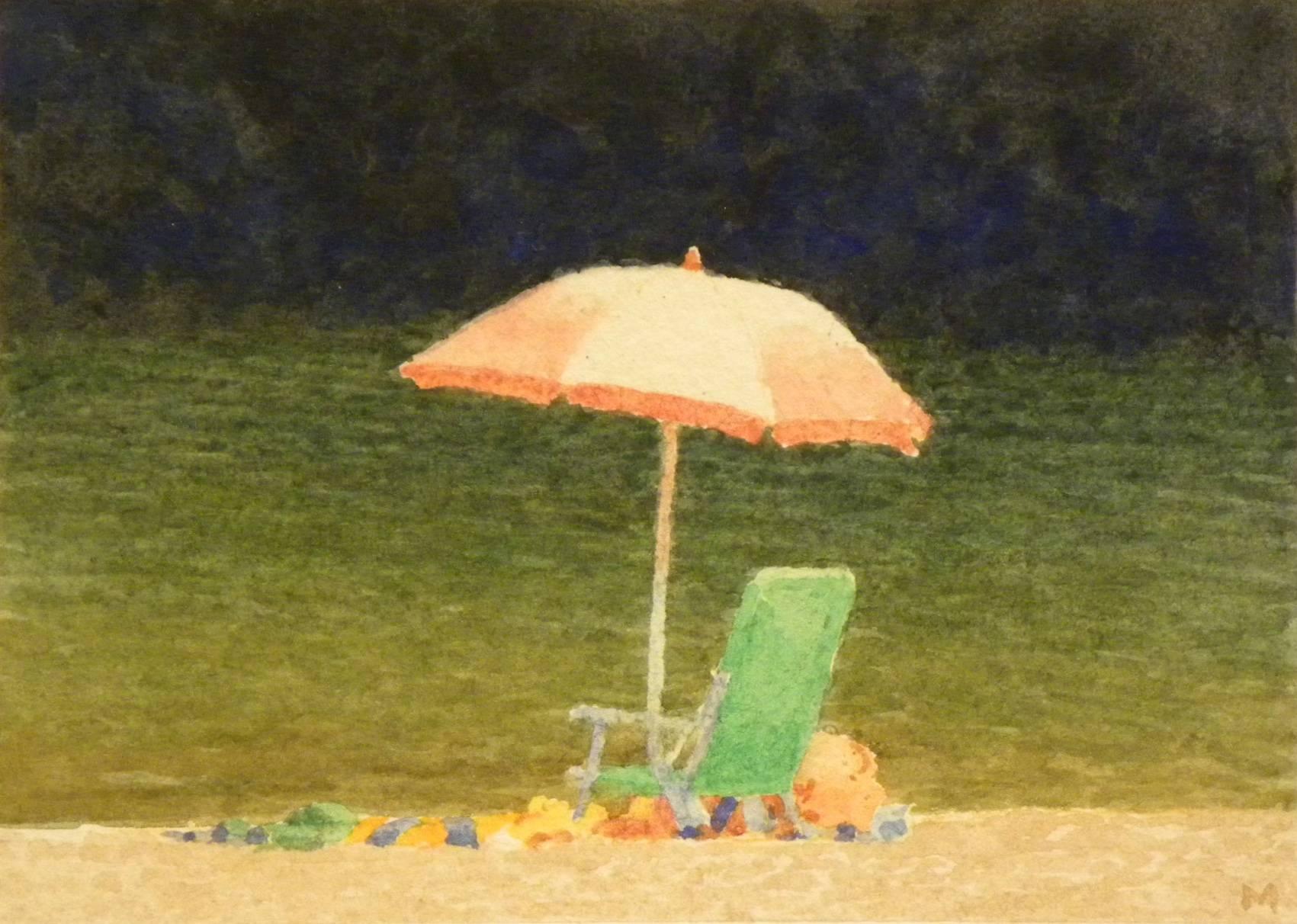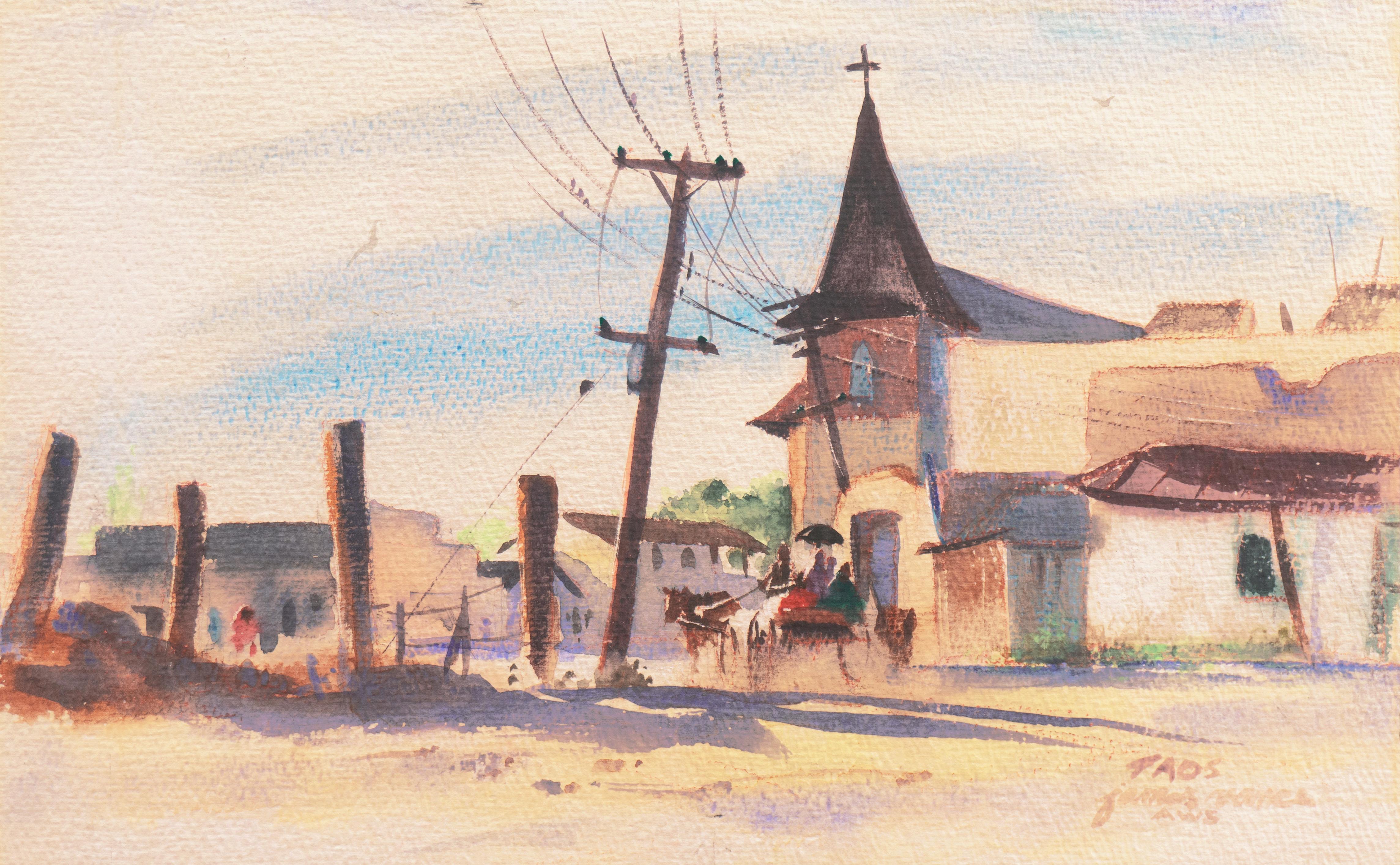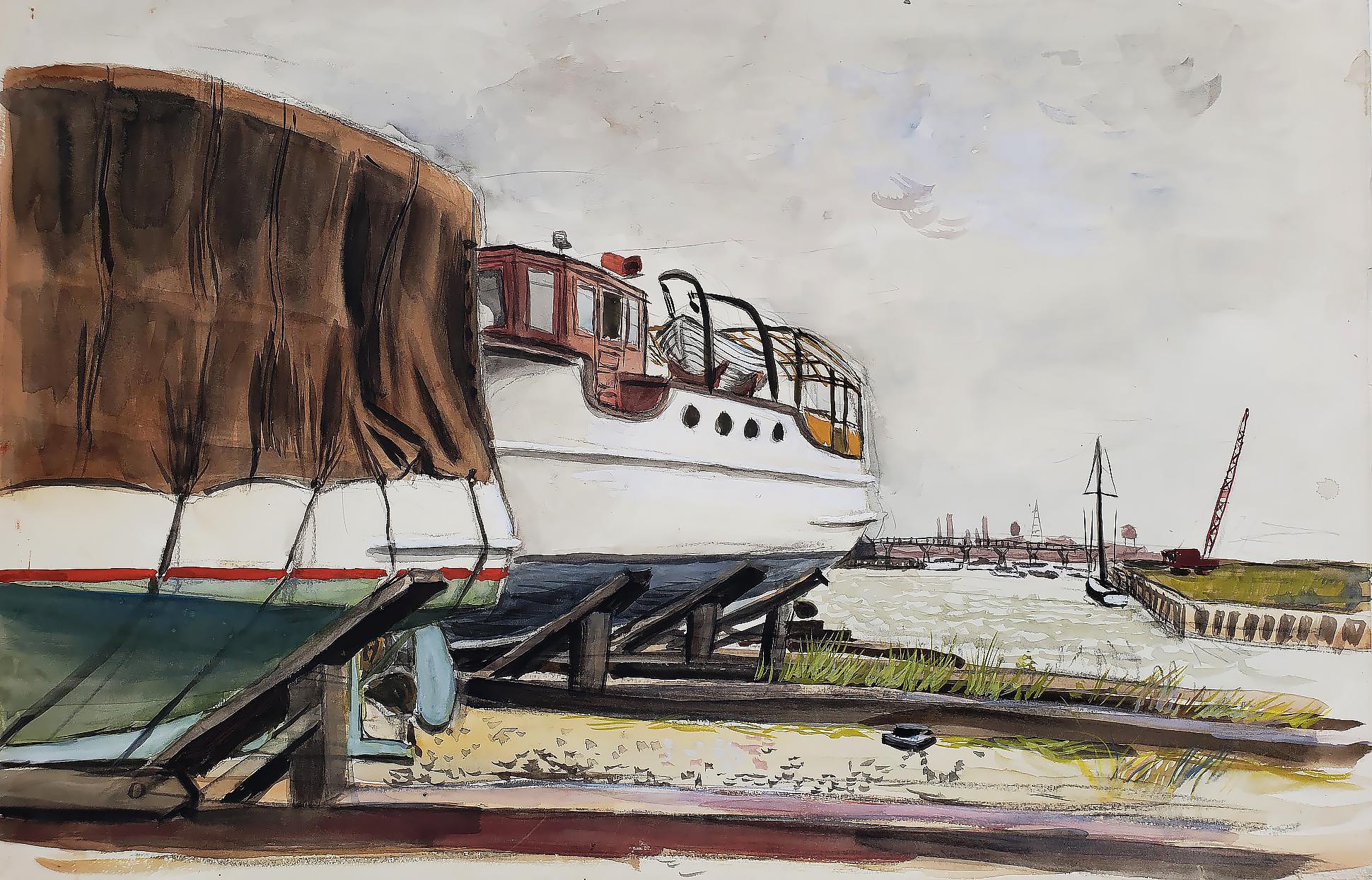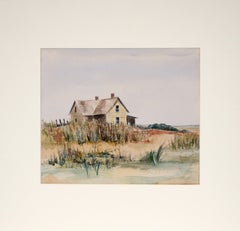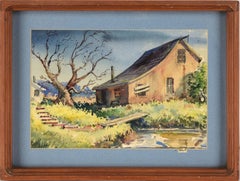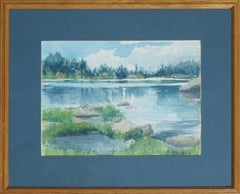
Blue Lake Landscape
View Similar Items
Want more images or videos?
Request additional images or videos from the seller
1 of 8
K. Bleecker Blue Lake Landscape 1980s
1980s
About the Item
- Creator:K. Bleecker (American)
- Creation Year:1980s
- Dimensions:Height: 17 in (43.18 cm)Width: 21 in (53.34 cm)Depth: 0.75 in (1.91 cm)
- Medium:
- Movement & Style:
- Period:
- Condition:
- Gallery Location:Soquel, CA
- Reference Number:Seller: JT-D52451stDibs: LU5427811232
About the Seller
5.0
Platinum Seller
These expertly vetted sellers are 1stDibs' most experienced sellers and are rated highest by our customers.
Established in 1986
1stDibs seller since 2014
2,513 sales on 1stDibs
More From This SellerView All
- Farmhouse by the Sea - Original Watercolor on PaperLocated in Soquel, CAFarmhouse by the Sea - Original Watercolor on Paper Tranquil landscape of a seaside farmhouse on the sand surrounded by coastal plants, in soft neutral watercolors. A distant ocean s...Category
Late 20th Century American Impressionist Landscape Drawings and Watercolors
MaterialsPaper, Watercolor
- The Old Barn - Farmhouse Landscape in Watercolor on PaperLocated in Soquel, CAIdyllic farmhouse landscape by California artist Edwin Haas (American, 1927-2010). A barn with a boarded window is the primary focus of this piece. It is seated in a lush landscape, full of grass, with a small stream running through the center. To the right of the barn is a bare oak tree, and steps can be seen leading to another building. A Sacramento artist...Category
Mid-20th Century American Impressionist Landscape Drawings and Watercolors
MaterialsWatercolor, Laid Paper
$680 Sale Price20% Off - Methodist Church in Old Bodie Ghost Town - California - Watercolor on PaperLocated in Soquel, CAMethodist Church in Bodie California - Watercolor on Paper Delightful watercolor by California artist Rachel Bentley (American, 1894-1991). The scene d...Category
Mid-20th Century American Impressionist Landscape Drawings and Watercolors
MaterialsPaper, Watercolor
- Two Anchored Sailboats - Nautical Seascape in Watercolor on PaperLocated in Soquel, CASerene depiction of two sailboats by an unknown artist (20th Century). Two boats are anchored in greenish water. The blue sky has some puffy clouds, and takes up roughly two thirds o...Category
Mid-20th Century American Impressionist Landscape Drawings and Watercolors
MaterialsLaid Paper, Watercolor
$680 Sale Price20% Off - Trees and Rolling Hills Landscape - Gouache on PaperLocated in Soquel, CASmall landscape with large trees by M. J. (Charles) Karnoff (Russian-American). Several large trees occupy the left side of the frame, lining a simple fence. There are some rolling hills in the background, with smaller trees on the horizon. Initialed "M.J.K." in lower right corner. Presented in a new off-white mat...Category
Early 20th Century American Impressionist Landscape Drawings and Waterco...
MaterialsPaper, Gouache
$600 Sale Price20% Off - Whalers Shack on the Northern California Coast - Watercolor SeascapeLocated in Soquel, CASerene depiction of a Whaling shack circa 1900 near Davenport, California attributed to Lillian Josephine (Dake) Heath (19th century). Monogram on Verso "J. H. 1900". Dated and initialed on verso "J. H. Feb. 1900" Presented in a new white mat with foam core backing. Mat size: 14"H x 18"W Paper size: 9.25"H x 13.25"W Lillian Heath was one of the Jolly Daubers at the turn of the 19th-century and as a young student, married the senior artist and instructor, Frank Heath...Category
Early 1900s American Impressionist Landscape Drawings and Watercolors
MaterialsWatercolor, Archival Paper
$920 Sale Price20% Off
You May Also Like
- The Rapids (Maine)By John WhorfLocated in Provincetown, MAJohn Whorf, born in 1903, was a talented, opinionated artist who achieved great success at a young age. Encouraged by his artistic father, Whorf studied briefly during his early te...Category
Early 20th Century American Impressionist Landscape Drawings and Waterco...
MaterialsPaper, Watercolor
- "Untitled 1, " Watercolor PaintingLocated in Denver, COClyde Steadman's "Untitled 1" is an original, handmade watercolor painting that depicts an urban landscape with human silhouettes.Category
2010s American Impressionist Figurative Drawings and Watercolors
MaterialsPaper, Watercolor
- "River Landscape" Julian Alden Weir, American Impressionist, Connecticut SceneBy Julian Alden WeirLocated in New York, NYJulian Alden Weir River Landscape Signed lower left Watercolor on paper 9 x 11 1/2 inches Provenance: Kraushaar Galleries, New York Sotheby's Parke Bernet, New York, 1965, Lot 27 E....Category
Late 19th Century American Impressionist Landscape Drawings and Watercolors
MaterialsWatercolor, Paper
- "Park Street Church, Boston, " John Whorf Impressionist Watercolor WPA CityscapeBy John WhorfLocated in New York, NYJohn Whorf (1903 - 1959) Park Street Church, Boston, circa 1930-45 Watercolor on paper 21 x 15 inches Signed lower right Housed in its original frame Provenance: Milch Gallery, New ...Category
1930s American Impressionist Landscape Drawings and Watercolors
MaterialsWatercolor, Paper
- "Train Station, " Max Kuehne, Industrial City Scene, American ImpressionismBy Max KuehneLocated in New York, NYMax Kuehne (1880 - 1968) Train Station, circa 1910 Watercolor on paper 8 1/4 x 10 1/4 inches Signed lower right Provenance: Private Collection, Illinois Max Kuehne was born in Halle, Germany on November 7, 1880. During his adolescence the family immigrated to America and settled in Flushing, New York. As a young man, Max was active in rowing events, bicycle racing, swimming and sailing. After experimenting with various occupations, Kuehne decided to study art, which led him to William Merritt Chase's famous school in New York; he was trained by Chase himself, then by Kenneth Hayes Miller. Chase was at the peak of his career, and his portraits were especially in demand. Kuehne would have profited from Chase's invaluable lessons in technique, as well as his inspirational personality. Miller, only four years older than Kuehne, was another of the many artists to benefit from Chase's teachings. Even though Miller still would have been under the spell of Chase upon Kuehne's arrival, he was already experimenting with an aestheticism that went beyond Chase's realism and virtuosity of the brush. Later Miller developed a style dependent upon volumetric figures that recall Italian Renaissance prototypes. Kuehne moved from Miller to Robert Henri in 1909. Rockwell Kent, who also studied under Chase, Miller, and Henri, expressed what he felt were their respective contributions: "As Chase had taught us to use our eyes, and Henri to enlist our hearts, Miller called on us to use our heads." (Rockwell Kent, It's Me O Lord: The Autobiography of Rockwell Kent. New York: Dodd, Mead and Co., 1955, p. 83). Henri prompted Kuehne to search out the unvarnished realities of urban living; a notable portion of Henri's stylistic formula was incorporated into his work. Having received such a thorough foundation in art, Kuehne spent a year in Europe's major art museums to study techniques of the old masters. His son Richard named Ernest Lawson as one of Max Kuehne's European traveling companions. In 1911 Kuehne moved to New York where he maintained a studio and painted everyday scenes around him, using the rather Manet-like, dark palette of Henri. A trip to Gloucester during the following summer engendered a brighter palette. In the words of Gallatin (1924, p. 60), during that summer Kuehne "executed some of his most successful pictures, paintings full of sunlight . . . revealing the fact that he was becoming a colorist of considerable distinction." Kuehne was away in England the year of the Armory Show (1913), where he worked on powerful, painterly seascapes on the rocky shores of Cornwall. Possibly inspired by Henri - who had discovered Madrid in 1900 then took classes there in 1906, 1908 and 1912 - Kuehne visited Spain in 1914; in all, he would spend three years there, maintaining a studio in Granada. He developed his own impressionism and a greater simplicity while in Spain, under the influence of the brilliant Mediterranean light. George Bellows convinced Kuehne to spend the summer of 1919 in Rockport, Maine (near Camden). The influence of Bellows was more than casual; he would have intensified Kuehne's commitment to paint life "in the raw" around him. After another brief trip to Spain in 1920, Kuehne went to the other Rockport (Cape Ann, Massachusetts) where he was accepted as a member of the vigorous art colony, spearheaded by Aldro T. Hibbard. Rockport's picturesque ambiance fulfilled the needs of an artist-sailor: as a writer in the Gloucester Daily Times explained, "Max Kuehne came to Rockport to paint, but he stayed to sail." The 1920s was a boom decade for Cape Ann, as it was for the rest of the nation. Kuehne's studio in Rockport was formerly occupied by Jonas Lie. Kuehne spent the summer of 1923 in Paris, where in July, André Breton started a brawl as the curtain went up on a play by his rival Tristan Tzara; the event signified the demise of the Dada movement. Kuehne could not relate to this avant-garde art but was apparently influenced by more traditional painters — the Fauves, Nabis, and painters such as Bonnard. Gallatin perceived a looser handling and more brilliant color in the pictures Kuehne brought back to the States in the fall. In 1926, Kuehne won the First Honorable Mention at the Carnegie Institute, and he re-exhibited there, for example, in 1937 (Before the Wind). Besides painting, Kuehne did sculpture, decorative screens, and furniture work with carved and gilded molding. In addition, he designed and carved his own frames, and John Taylor Adams encouraged Kuehne to execute etchings. Through his talents in all these media he was able to survive the Depression, and during the 1940s and 1950s these activities almost eclipsed his easel painting. In later years, Kuehne's landscapes and still-lifes show the influence of Cézanne and Bonnard, and his style changed radically. Max Kuehne died in 1968. He exhibited his work at the National Academy of Design, the Art Institute of Chicago, the Carnegie Institute in Pittsburgh, the Memorial Art Gallery of the University of Rochester, and in various New York City galleries. Kuehne's works are in the following public collections: the Detroit Institute of Arts (Marine Headland), the Whitney Museum (Diamond Hill...Category
1910s American Impressionist Landscape Drawings and Watercolors
MaterialsPaper, Watercolor
- "Monhegan Island, Maine, " Edward Dufner, American Impressionism Landscape ViewBy Edward DufnerLocated in New York, NYEdward Dufner (1872 - 1957) Monhegan Island, Maine Watercolor on paper Sight 16 x 20 inches Signed lower right With a long-time career as an art teacher and painter of both 'light' and 'dark', Edward Dufner was one of the first students of the Buffalo Fine Arts Academy to earn an Albright Scholarship to study painting in New York. In Buffalo, he had exchanged odd job work for drawing lessons from architect Charles Sumner. He also earned money as an illustrator of a German-language newspaper, and in 1890 took lessons from George Bridgman at the Buffalo Fine Arts Academy. In 1893, using his scholarship, Dufner moved to Manhattan and enrolled at the Art Students League where he studied with Henry Siddons Mowbray, figure painter and muralist. He also did illustration work for Life, Harper's and Scribner's magazines. Five years later, in 1898, Dufner went to Paris where he studied at the Academy Julian with Jean-Paul Laurens and privately with James McNeill Whistler. Verification of this relationship, which has been debated by art scholars, comes from researcher Nancy Turk who located at the Smithsonian Institution two 1927 interviews given by Dufner. Turk wrote that Dufner "talks in detail about Whistler, about how he prepared his canvasas and about numerous pieces he painted. . . A great read, the interview puts to bed" the ongoing confusion about whether or not he studied with Whistler. During his time in France, Dufner summered in the south at Le Pouleu with artists Richard Emil Miller...Category
Early 20th Century American Impressionist Landscape Drawings and Waterco...
MaterialsPaper, Watercolor
$4,800 Sale Price20% Off

